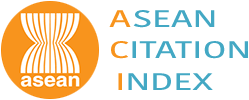Effect of Ovarian Stimulation with Recombinant FSH for In Vitro Fertilization (IVF) on Anti Müllerian Hormone (AMH) Levels as an Early Marker of Ovarian Reserve
Abstract
Objective: To analyze the effect of ovarian stimulation with recombinant FSH on AMH levels as a marker of ovarian reserve in patients undergoing IVF. Method: This study is an intervention study which compares AMH levels pre- and post-ovarian stimulation with recombinant FSH in IVF participants to determine the effect of ovarian stimulation on ovarian reserve. This study was conducted at Dr. Cipto Mangunkusumo Hospital, Jakarta, from January to July 2010. AMH levels measured are AMH levels pre- and post-stimulation taken on the day of hCG evaluation. Result: Of 56 patients undergoing IVF treatment, 20 subjects were eligible for study. The mean age of the patients was 35. 3 ± 4.0 years, the mean duration of infertility 9.1 ± 5.7 years, the mean BMI 21.9 ± 3.4 kg/m2, the median AMH level pre-stimulation was 4.0 ng/ml and the total dosage of FSH used was 2747.5 ± 1076.3 IU/ day, the mean duration of ovarian stimulation was 9 ± 3 days. Of the 20 subjects recruited, 11 patients (55%) had a decrease in AMH levels, and the remaining 9 patients (45%) did not. Data analysis showed that the decrease in AMH levels was not statistically significant (p = 0.295) [AMH1; median 4.0 ng/ml (range 2.2 - 5.9) and AMH2; median 3.2 ng/ml (range 1.6 - 4.8)]. Conclusion: AMH levels decrease following ovarian stimulation with recombinant FSH is not statistically significant, so it can be concluded that ovarian stimulation in IVF has no effect on ovarian reserve. [Indones J Obstet Gynecol 2011; 35-2: 70-3] Keywords: ovarian reserve, AMH, recombinant FSH, ovarian stimulation, IVFDownloads
Download data is not yet available.













